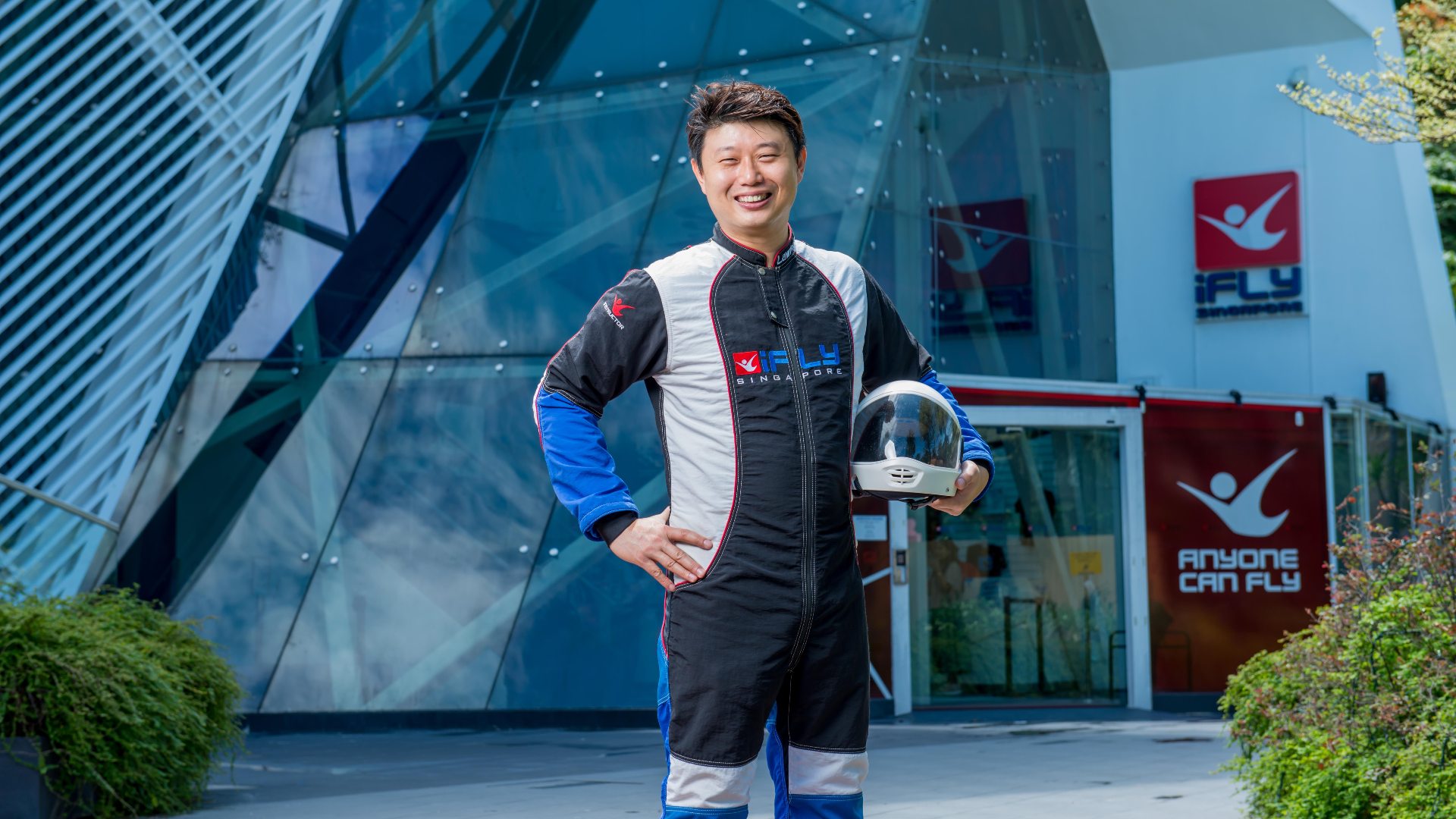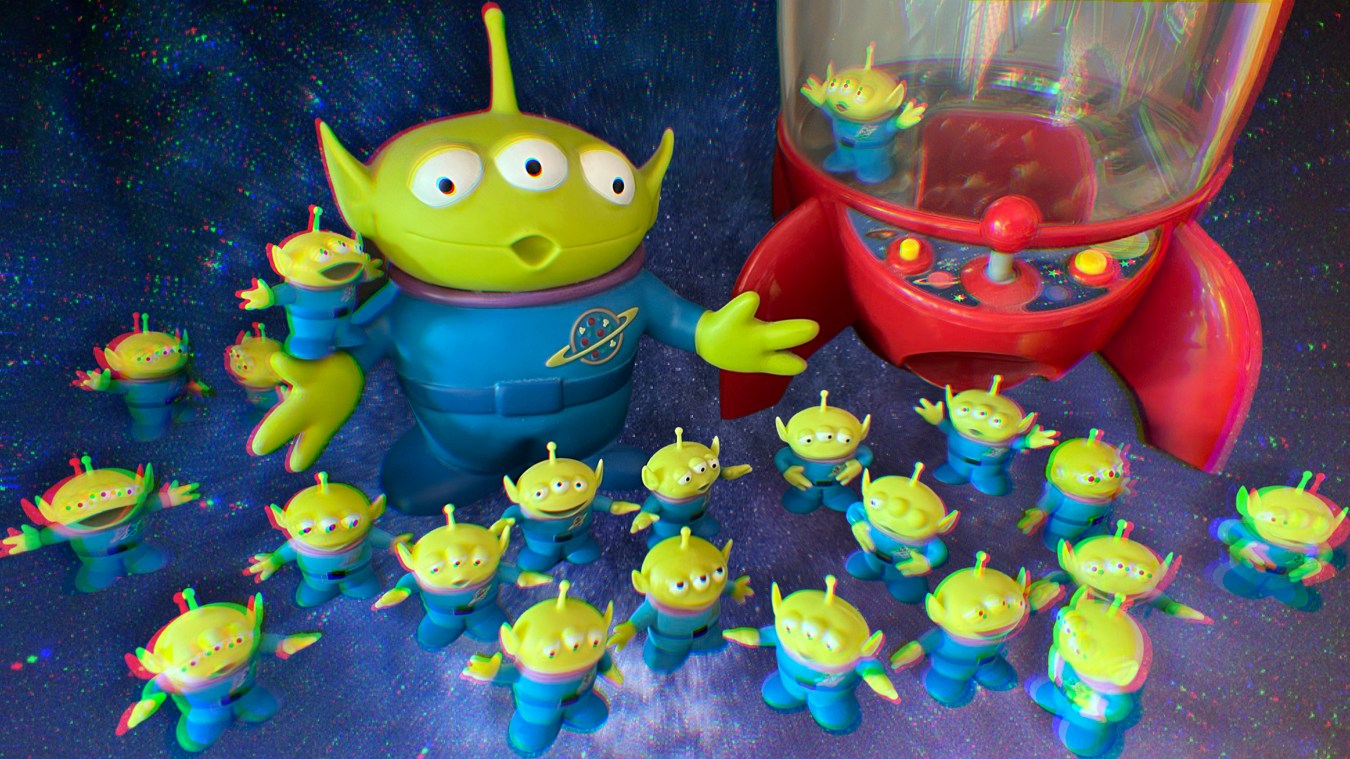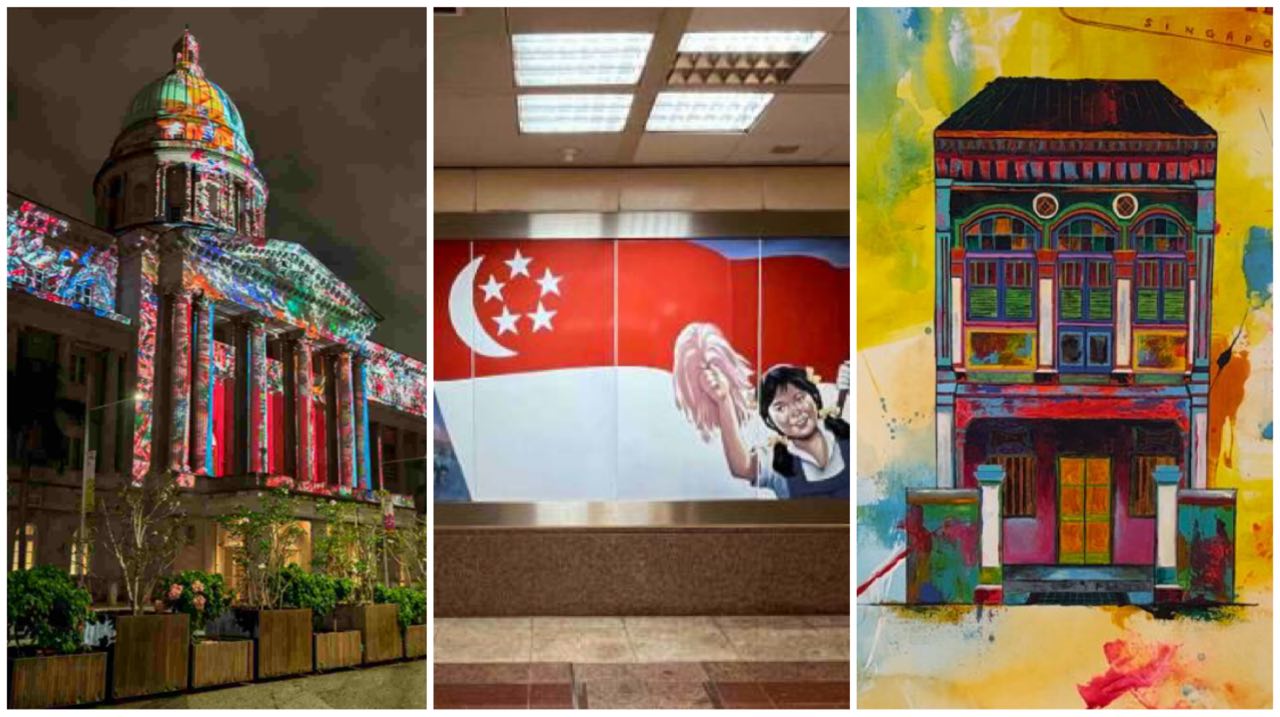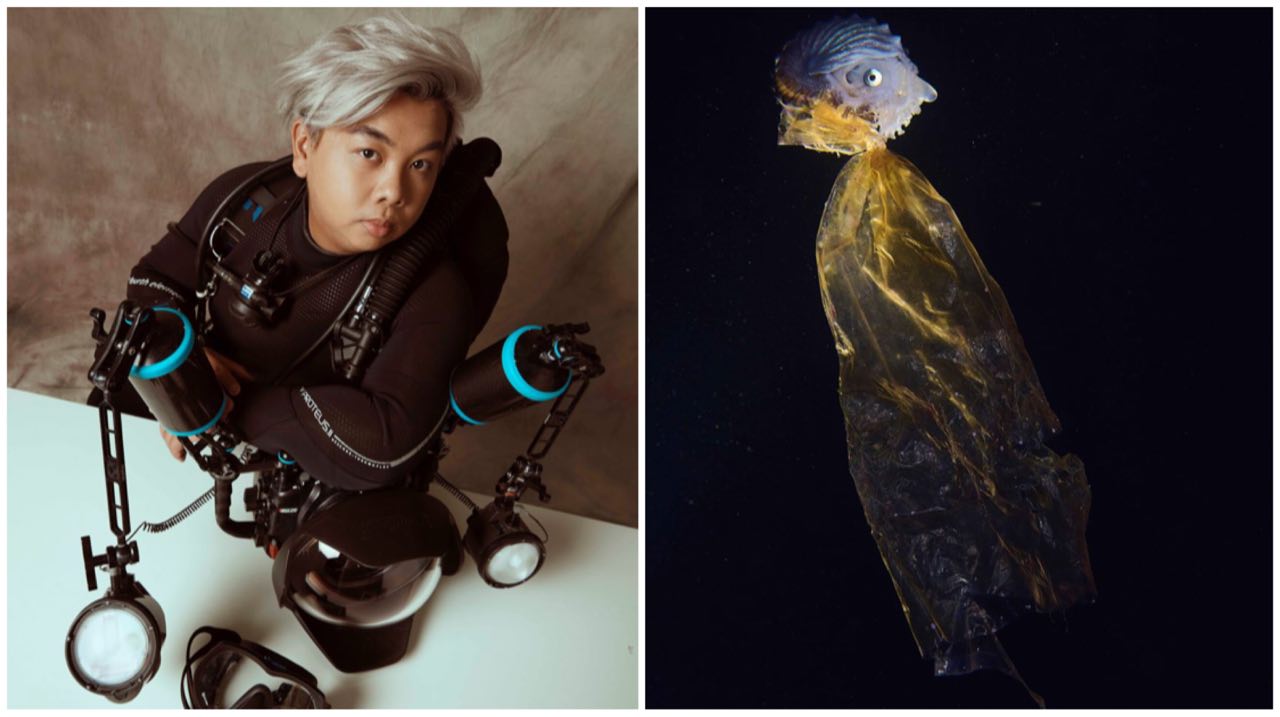Top Gun: Blue Skies Ahead For iFly Singapore Boss And Ex-Red Lions Leader
Skydiving is almost like a dream - many fantasise about it, but never actually follow through with it or get to do it because the barrier to entry is so high (up). Even professionals and parachuters in our Singapore Armed Forces need frequent training - after all, practice makes perfect.
One man with a great idea and an equally grand business plan changed all that in 2011 when he launched iFly Singapore, which is celebrating its 10th year anniversary this year (technically it was last year, but thanks to Covid, the indoor skydiving facility was unable to hold a proper activity-filled celebration).
That man: Lawrence Koh, an avid skydiver, ex-Commando, Avionics Systems Engineering degree holder, and ex-Red Lions Parachute Team Leader, who, with the introduction of the iFly Singapore wind tunnel, managed to change a 40-year-old skydiving syllabus in the SAF and make it part of free-fall training. Not only that, he's effectively brought our lofty fantasies down to earth - the 500,000 who have flown at iFly SIngapore in the past decade are a testament to its popularity, and, proof that, like the facility’s motto, “anyone can fly”.
Located on Sentosa’s Siloso Beach, iFly Singapore has achieved eight Guinness World Records, and trained two Gold medallists in the international indoor skydiving competitive scene.
We speak to the 45-year-old father of two about making his and everyone’s dreams soar, coping during the pandemic, and taking an award-winning indoor skydiving team to the next level.
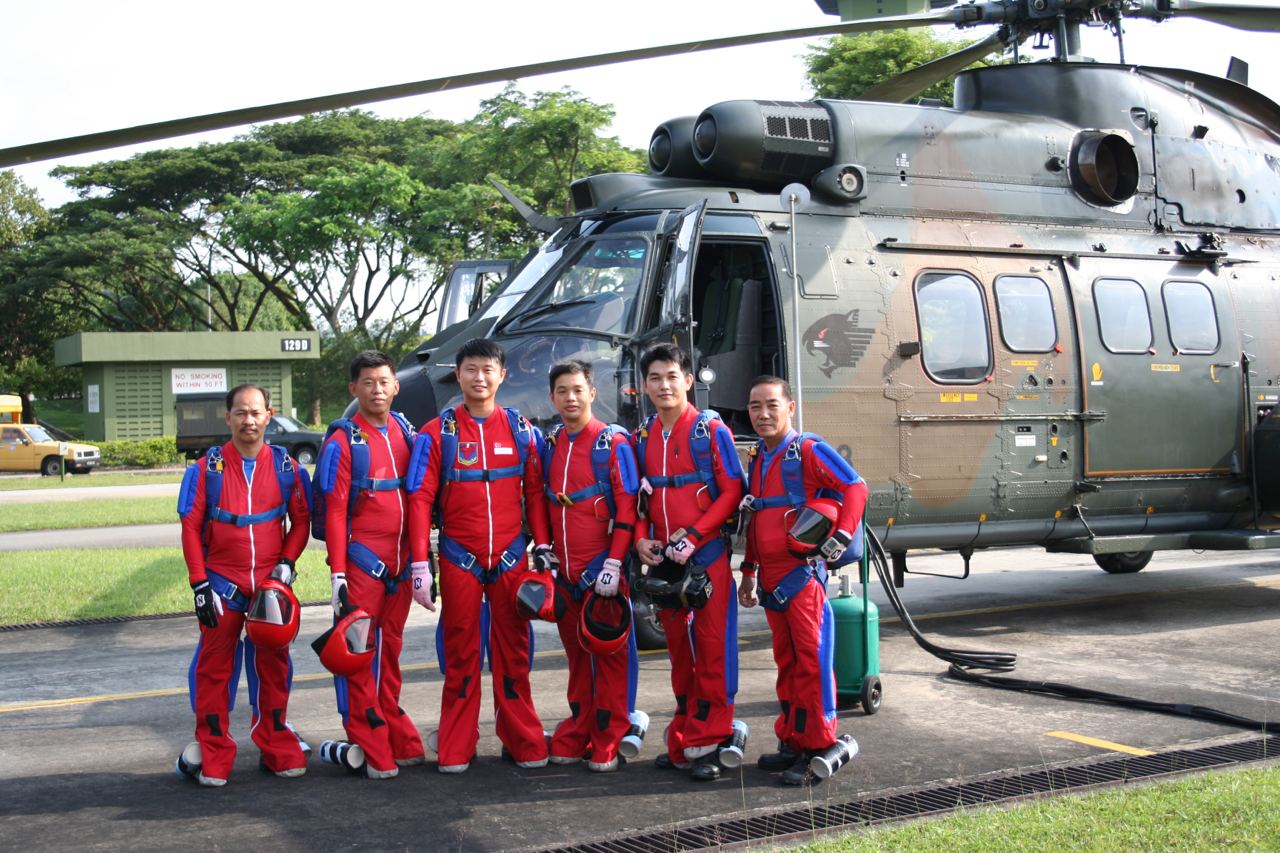
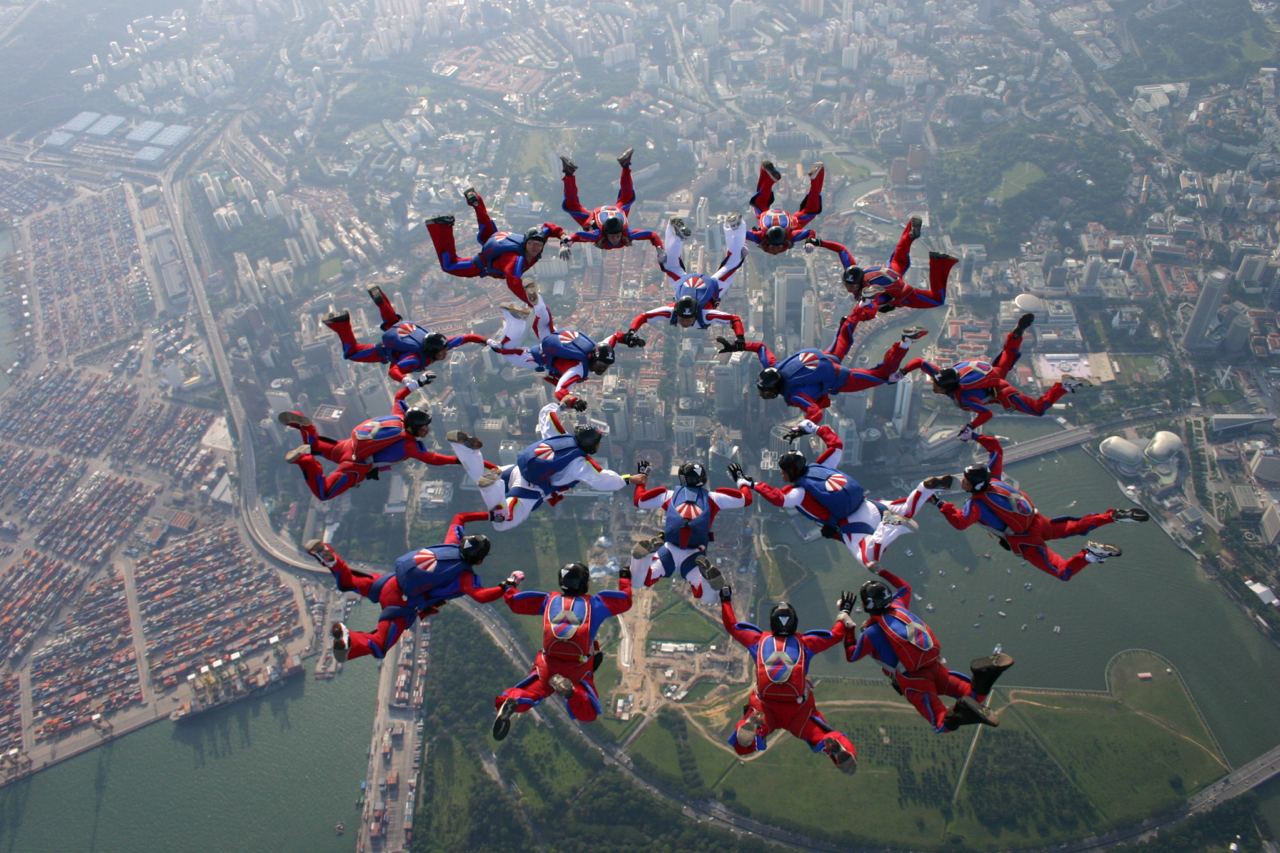
During your career with the SAF, you were in charge of the parachuting school and leader of the Red Lions. How did your experience with the SAF help in making iFly take flight?
It was all a part of my journey. If I had joined the Air Force, then I think iFly would not be in Singapore, and I don’t think there would have been an indoor skydiving facility.
I chose to be a Commando and picked up a study award to go to the UK, where I took up skydiving as a hobby. When I came back to the Commandos, they said "he has so much passion in skydiving – let’s push him to the school!”. (Other people go and chiong the mountain, I go and chiong the parachute! )
When I joined the parachuting school, they already had clear lesson plans for 40 years, since 1965. It was safe and very process driven. But there was this new thing about wind tunnels and I wondered why we didn’t incorporate it. In Singapore, it was the first time for many people to jump because there was no simulation. Even before you fly a plane, you have many hours of simulation prior. I made 300 jumps before I came back. But it was the first time for many in the Special Operation Forces.
I sent a proposal to the Chief of Commandos, then he sent me to the US to conduct studies and come back to implement this programme. So, a 40-year syllabus was changed under my hands – making wind-tunnel training part of the free-fall training.
After my six-year bond [with the SAF], I thought if I should stay on - stay also not bad lah, the Commando community is very close knit. We are all brothers. But my passion was in skydiving. So, I left late-2007 and made the decision to do a wind tunnel project.
Then sibeh suay - 2008 was the global financial crisis. I had to suck it up. I prepared my business proposal and knocked on everyone’s door to find investors. Somehow, maybe that time quite hamsum I found two investors who believed in me. They are still with me today.
You get part of your revenue from the SAF who train at the facility, you have members who've been with you since Day 1, and you also lease out part of your property as a secondary revenue stream. Did you have any real fears during the pandemic or did you have quite a good safety net?
Of course fear lah! Closed for few months leh! Although during the Circuit Breaker, defence was considered essential, [so they continued to train here]. The SAF still comes here for training, even though most of their training is done in the US. So we still have revenue. We also gave our tenants six-months free rental.
We also had to assure the employees that we wouldn’t cut their salary or that they would be retrenched, but if it was going to happen, I would at least give them a few months’ notice. Luckily we didn’t have to do that.
Then [the Government] allowed us to open, but for sports only. Later, when leisure activities were allowed to resume, and with the SingapoRediscovers Vouchers, the crowds returned. We already knew for the next one to two years not to rely on tourism. My goal was to break even.
We pivoted quickly to attract locals and came up with a local rate. We grew our member base by 100 to 200%. That was a big thing for us. Before, our members formed 10% of our revenue, but now it’s about 30%. Pre-pandemic, we saw 80% tourists and 20% locals. But now we are doing similar numbers at 100% locals.
Apart from international and local celebrities and personalities like Donnie Yen, Zhang Ziyi, Michael Schumacher Park Hyung-Sik, Zoe Tay, and former minister George Yeo, who are some of the most interesting characters to have flown at iFly Singapore?
The oldest is 97 years old. Three grannies, hand-in-hand, wanted to fly together. The youngest in Singapore was 7 years old. There have actually been quite a few marriage proposals in the wind tunnel. Even one of our ex-employees proposed to his wife inside!
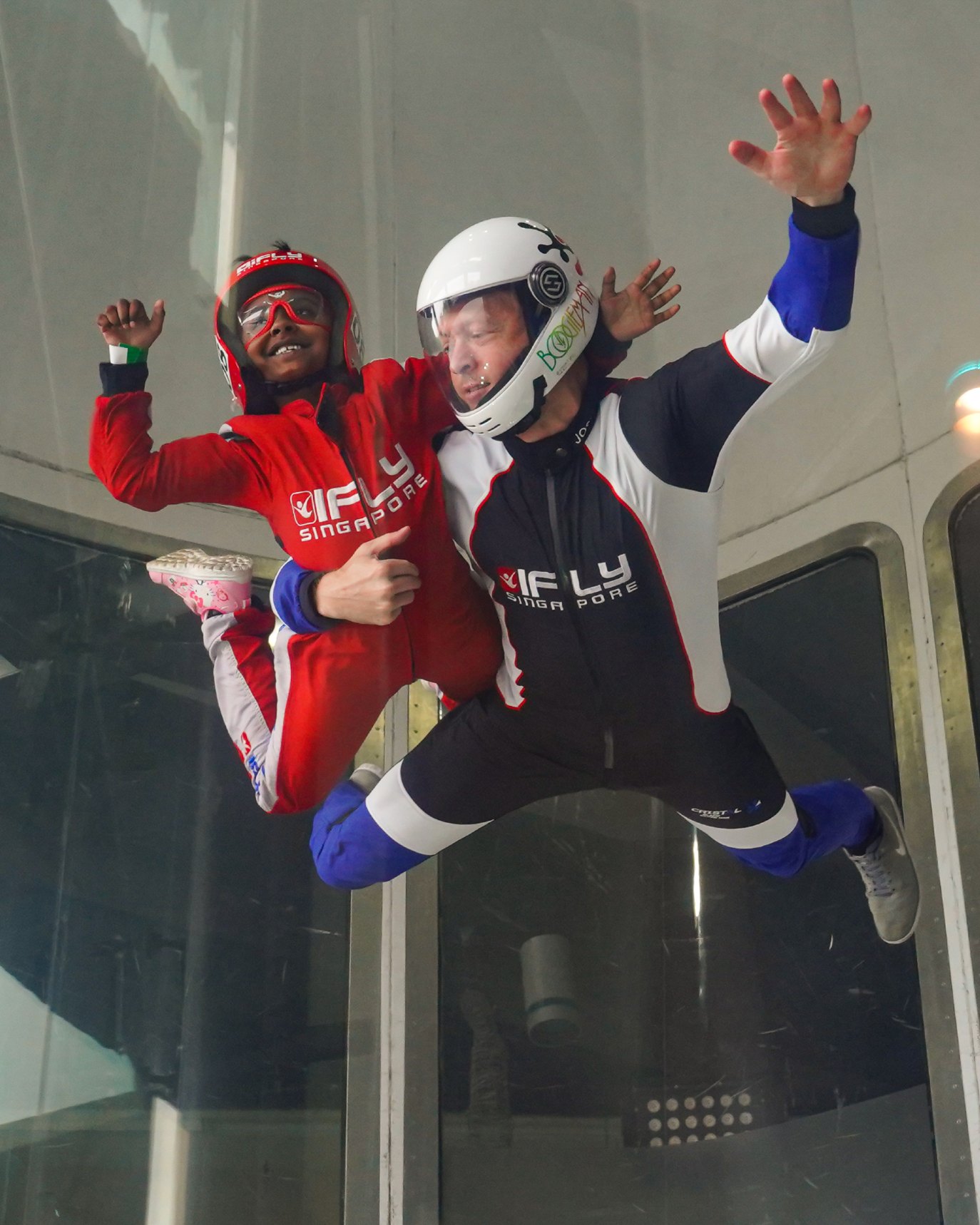
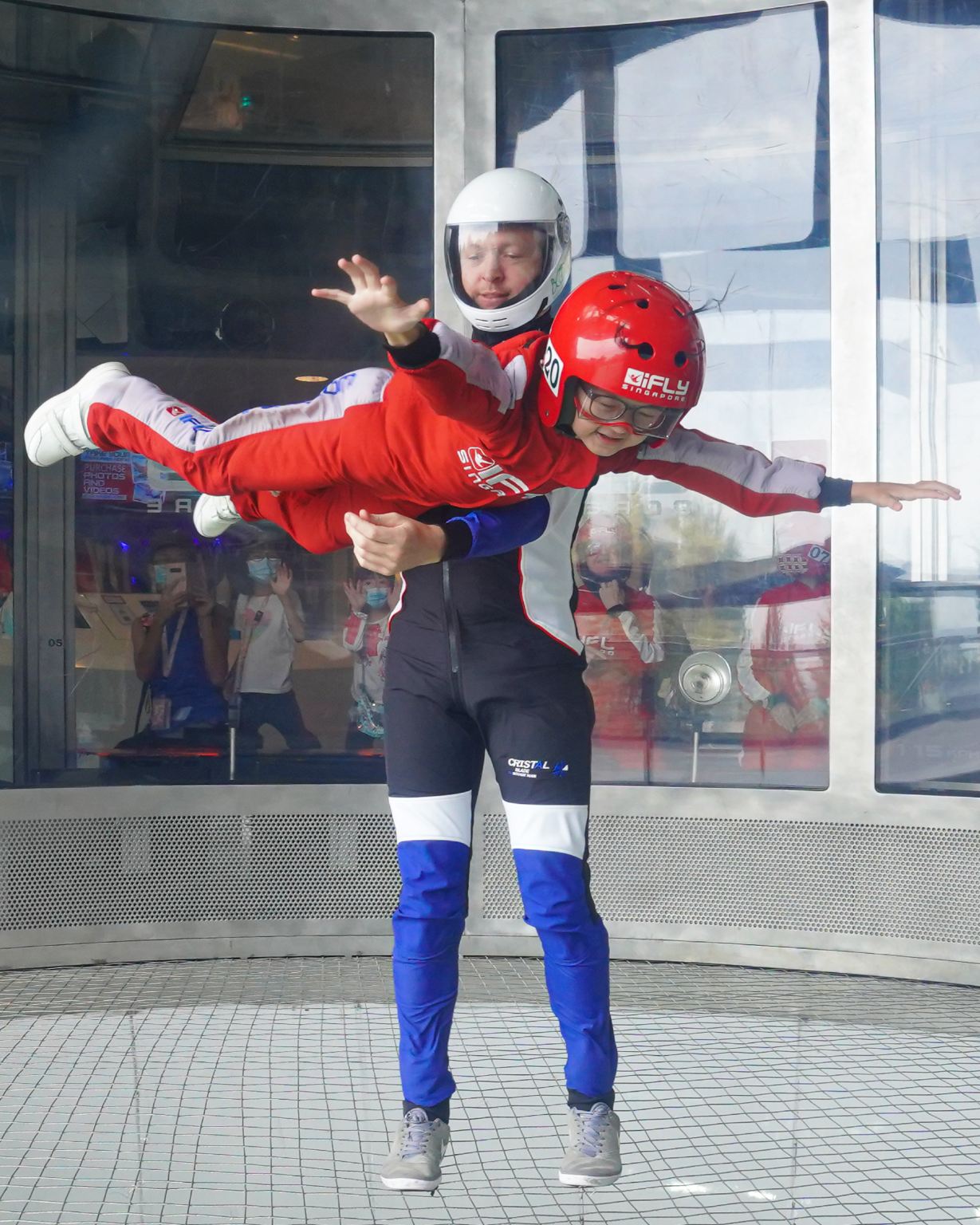
iFly Singapore is fun and thrilling, but there's also a great sense of community. As part of your 10th anniversary celebrations this year, you are inviting 1,000 beneficiaries across 10 charity organisations to fly throughout 2022. Some students with special needs even set a new Guinness World Record with iFly Singapore! Tell us about this important relationship between iFly Singapore and the community.
It started off ad-hoc. Then after that, it became part of our work plan. One of my friends, who was the NUH head of operations, told me he had a cancer patient, a kid around 7 or 8 years old who wanted to fly. Of course, I wanted to do it. But I was advised, what if something bad happened? In the end, I went ahead. NUH supported with one whole team of doctors standing by. She got her wish, and then a few months later she passed away. And we provided that last wish.
When we do corporate social responsibility (CSR) activities, all our instructors are very happy. They know they are helping the underprivileged.
Five Singaporean youths flew our flag at the 4th FAI World Cup of Indoor Skydiving this year and clinched four titles, with Kyra Poh winning Gold and looking to venture into competitive outdoor skydiving scene too. How did the Team Singapore competitive indoor skydiving team come about, and what is your vision for the squad?
We have been trying very hard to get indoor skydiving recognised as a sport in Singapore. It's easier for other countries that [already] recognise skydiving as a sport.
In Asia, at that point of time, we were the only ones with a wind tunnel. We started training our kids from young. Kyra was 8 years old, Yi Xuan was 9. In 2018, we won our first two-way team Gold medal in Bahrain. It was like, finally, after so long! People have asked me, how did you know they could do it? I said, I don’t know! Who can say that I can spot talent? No way lah.
Only recently, after we kept winning Gold medals, did Kyra received the spexScholarship. There were only 17 recipients [this year]. To me, it is a major thing, because spexScholarship has a set structure in order to qualify. They are already looking into how to groom the next generation. And this is something that we are going to work on with them.
It means that indoor skydiving is going to stay as a sport in Singapore lah. Finally!
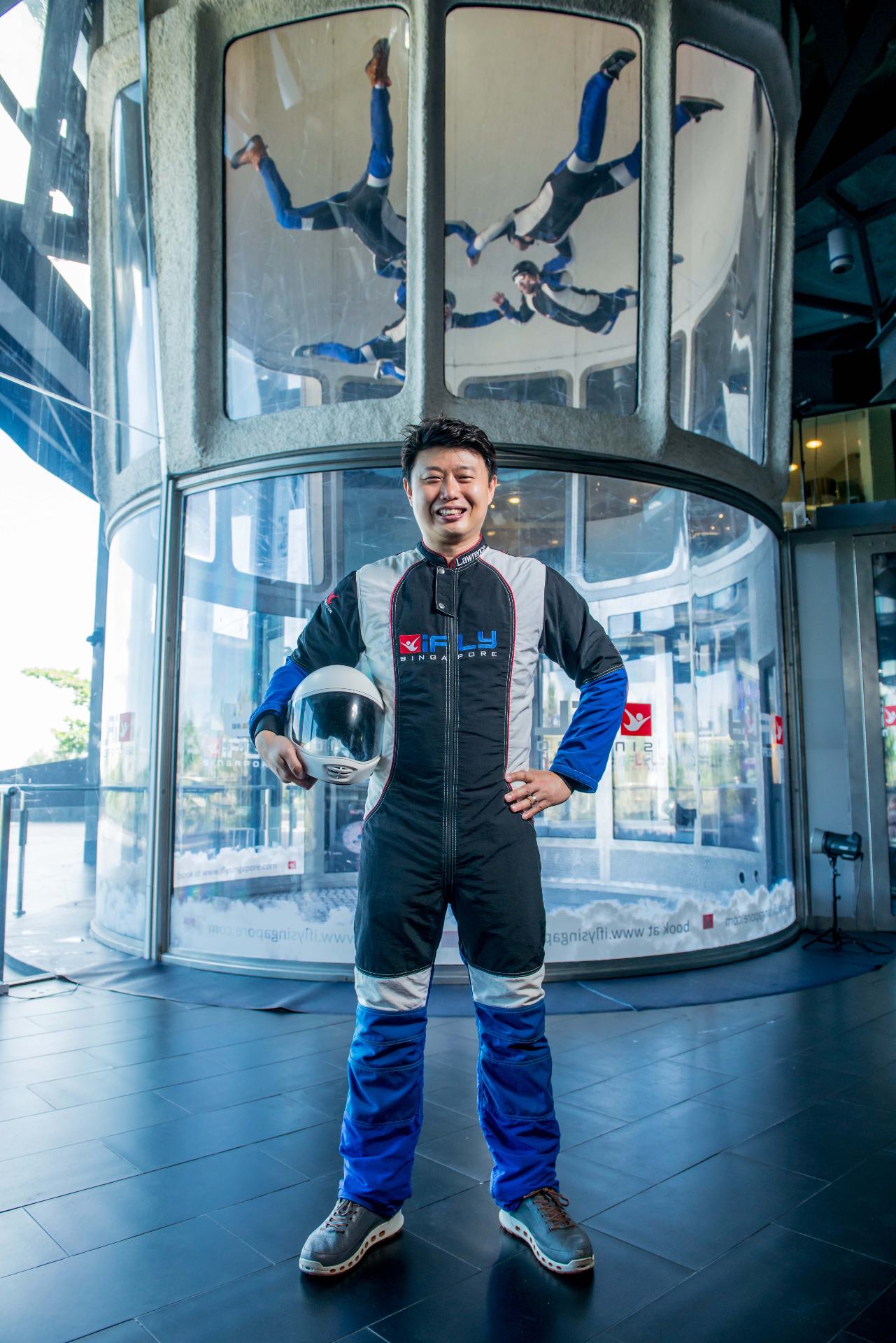
For 10 years, you've been at the helm - what do you (still) enjoy most about your work?
Solving problems. Being an entrepreneur is always about solving problems. You will be very satisfied when you encounter problems that are difficult to solve, but you manage to do so.
What motto do you live by?
Don’t wait for things to happen, make it happen with courage and compassion!
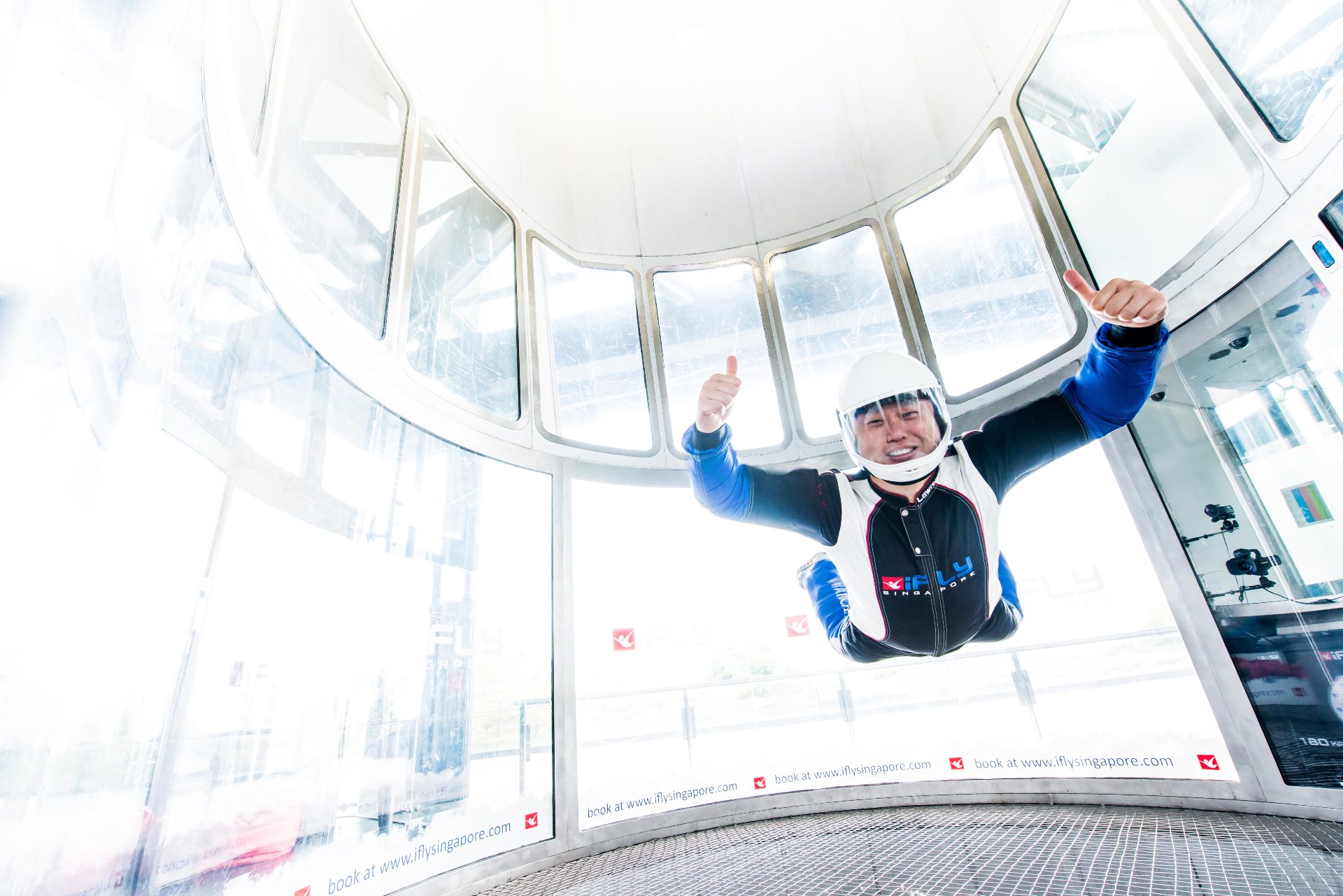
What are your future plans for iFly Singapore?
To build more wind tunnels in the region to fuel the dream to allow anyone to fly. Make indoor skydiving a recognised sport in Singapore, an Olympic sport and to build the next generation of indoor skydiving athletes and support their path as they turn into champions.
Wow! Here are 6 awesome things you didn't know about iFly Singapore
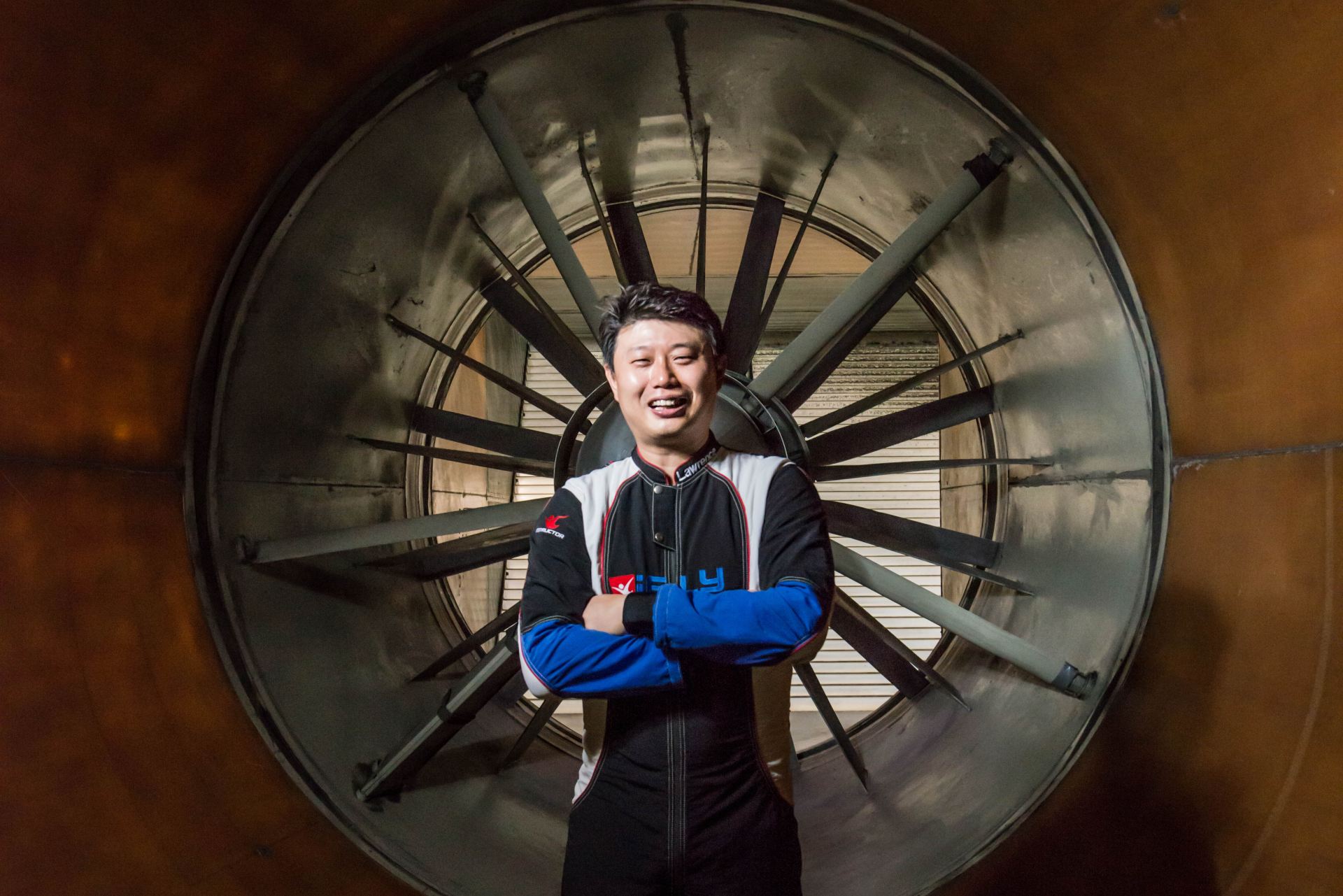
- Anyone - from first-timers to professional flyers - can fly, as long as you're aged between seven and 106!
- Most first-time flyers experience a huge adrenalin rush as their first time in the wind tunnel triggers the release of serotonin, or the "feel good" hormone, in the brain.
- The stainless-steel elastic net at the base of the wind tunnel is strong enough to hold two adult elephants (or 200 people who weigh 100kg each)!
- The usual body flight wind speed ranges from 160 to 190km/h, but the four fans weighing in at a whopping seven tonnes can each produce airspeeds of up to 300km/h - that's faster than the average speed of an F1 car.
- An iFly Singapore flight is not only fun and exhilarating, but it also gives you a full-body workout!
- An indoor skydiving instructor can expect to burn nearly 2,000 calories a day – that’s equivalent to burning three-and-a-half Big Macs' worth of calories!
For the latest updates on Wonderwall.sg, be sure to follow us on Facebook, Instagram and Telegram. If you have a story idea for us, email us at [email protected].







